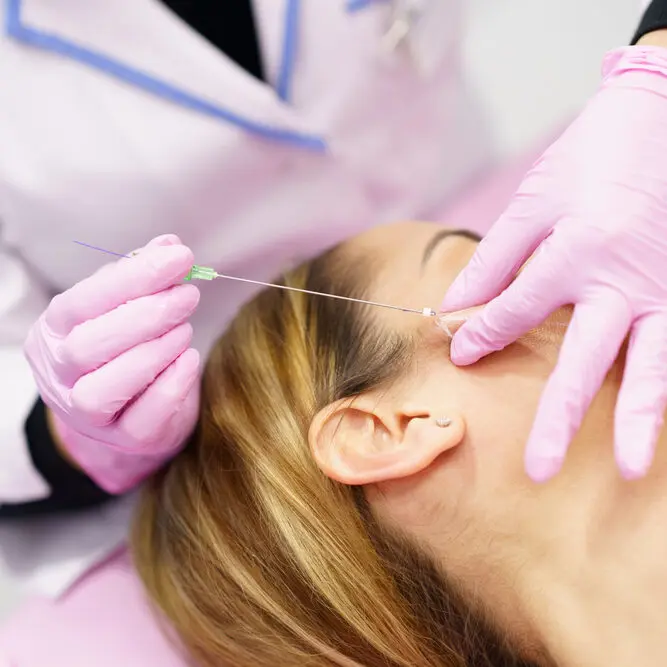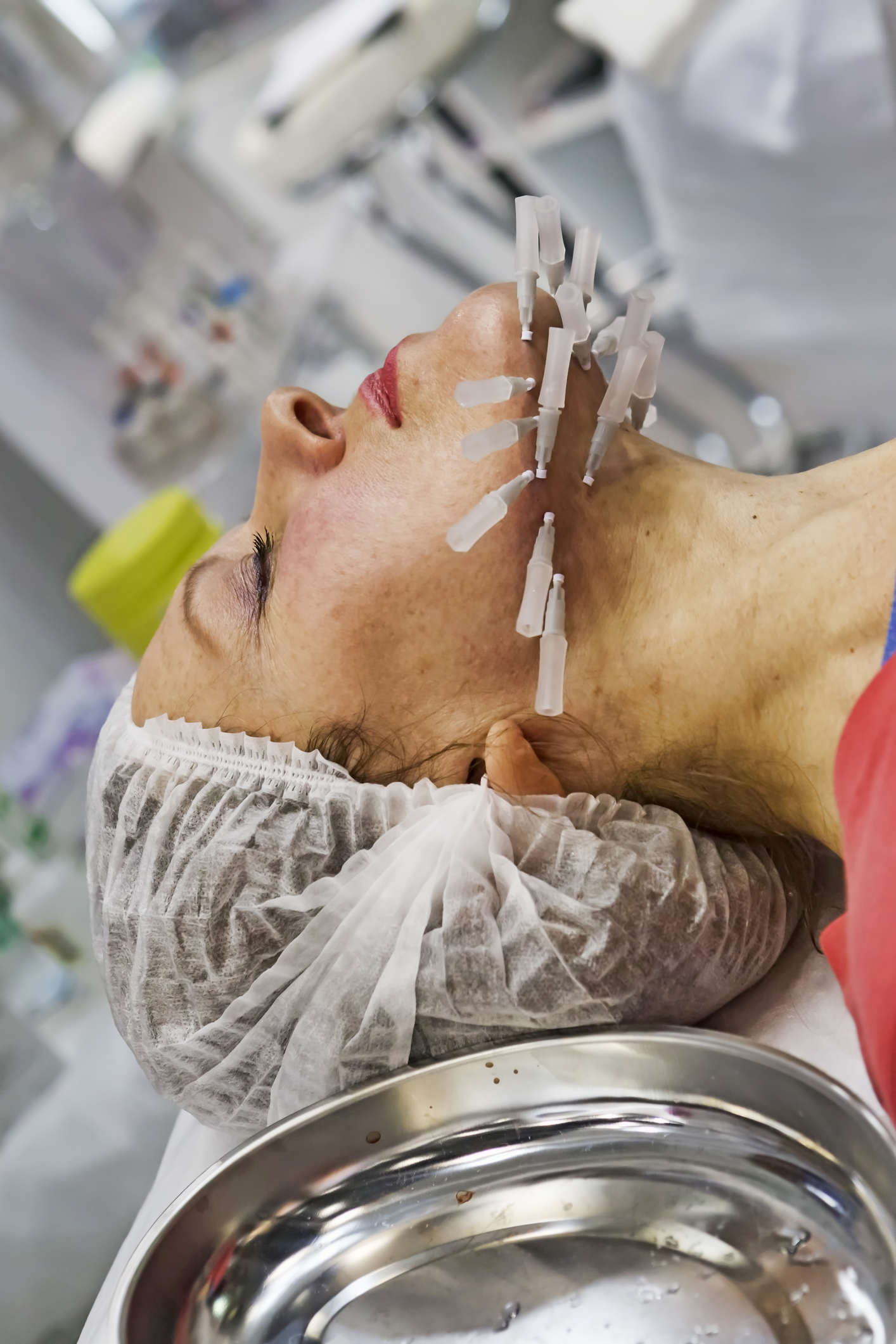Thread Lift Gone Wrong
In this blog post, we will take you through everything you need to know about PDO thread lifts – from their FDA regulations to potential complications and real-life stories of thread lift gone wrong. We’ll provide tips on how to prevent complications and how to handle them if they occur. Lastly, we’ll discuss how to make an informed decision about whether a PDO lift is right for you and the importance of seeking professional consultation before undergoing any cosmetic procedure.
Article's contents
- Understanding PDO Thread Lifts
- FDA Approval and Regulations
- Potential Complications and Disadvantages
- Recognizing Early Signs of Trouble
- Swelling and Bruising: Common Post-PDO Lift Side Effects
- Infections and Complications
- Unforeseen Reactions to Threads
- Thread Migration and Its Effects
- Safety Measures to Prevent Thread Lift Complications
- Dealing with Discomfort and Dimpling
- Proper Aftercare and Follow-ups
- How to Handle a Thread Lift Gone Wrong?
- Addressing Asymmetry After a Thread Lift
- When is Medical Attention Required?
- Can a Thread Lift Go Wrong Even with All Precautions?
- Making an Informed Decision about Thread Lifts
- The Importance of a Professional Consultation

Understanding PDO Thread Lifts
Polydioxanone (PDO) thread lifting is a minimally invasive procedure used to address sagging skin and signs of aging. The treatment involves inserting biodegradable threads made of polydioxanone, polycaprolactone or poly-L-lactic acid into the skin using a single entry point. These threads have tiny barbs or cogs that provide lift and stimulate collagen production in the soft tissues.
FDA Approval and Regulations
The FDA has approved certain types of PDO threads for specific cosmetic treatments, regulating the use of these threads and preventing unqualified individuals from performing the procedure. Patients should always verify the qualifications and experience of their PDO provider, choosing an experienced and reputable professional to minimize the risk of complications.

Potential Complications and Disadvantages
While PDO can be an effective alternative to surgical facelifts, it’s important to be aware of the potential complications and disadvantages associated with this procedure. One risk is the possibility of infection, as the insertion of threads under the skin can increase the risk of bacterial growth. Bruising and swelling are also common after the procedure, but excessive or prolonged bruising and swelling can occur in some cases. Another concern is thread migration, where the threads can move from their original position, causing asymmetry or lumps. Additionally, patients may experience pain and discomfort during the procedure and for several days afterward. It’s important to note that the results of a PDO may not be as dramatic as those achieved with surgical facelifts, and additional treatments may be necessary to achieve desired results.
Recognizing Early Signs of Trouble
Infections and allergic reactions are potential complications that can arise from PDO lifting. Additionally, thread migration or breakage can occur if the threads are not properly inserted. It’s essential to choose a qualified and experienced practitioner who can minimize risks. Lastly, proper aftercare is vital to prevent complications and ensure desired results.
Swelling and Bruising: Common Post-PDO Lift Side Effects
Experiencing swelling and bruising after a PDO lift is common and can last for a few days. Cold compresses can help reduce swelling and alleviate any discomfort you may feel. It’s important to avoid strenuous activities and certain medications that could contribute to excessive swelling or bruising. However, if you notice severe swelling or bruising, it is essential to contact your doctor immediately as it may indicate complications. Following proper aftercare and adhering to your doctor’s instructions will help minimize the risk of these post-treatment side effects.
Infections and Complications
Infections and complications can arise in PDO procedures, just as they can in any medical procedures, especially those involving plastic surgery. However, it’s worth noting that thread lifts have a lower risk of complications compared to surgical facelifts. These issues often stem from the wrong technique being employed or inadequate sterilization protocols in the treatment area. While thread lifts are generally considered safe when performed by experienced professionals, the risk of infection or complications cannot be entirely eliminated. Therefore, it’s crucial for patients to choose qualified practitioners and maintain open communication about their concerns throughout the procedure to minimize the potential for adverse outcomes.
Unforeseen Reactions to Threads
When it comes to thread lift procedures, unforeseen reactions can occur due to individual differences in skin type and sensitivity. These reactions may manifest as complications such as infection, migration, or even thread breakage, which may require additional intervention. It is crucial for patients to report any adverse reactions immediately to their doctor in order to prevent further harm or complications.
Thread Migration and Its Effects
Thread migration occurs when the threads used in a thread lift procedure move from their original placement. This can result in asymmetry or irregularities in the treated area. Apart from cosmetic concerns, migration can also cause pain, discomfort, or inflammation, which may require the removal of the threads. However, it’s essential to note that proper technique and experienced practitioners can significantly reduce the risk of thread migration. Although rare, severe complications like nerve damage or infection may occur due to thread migration.
Safety Measures to Prevent Thread Lift Complications
To ensure the safety of your thread lift procedure, it is crucial to choose a highly qualified and experienced practitioner. Take the time to thoroughly research their background, certifications, and reviews. During your consultation, discuss potential risks, complications, and expected outcomes. It is essential to follow all pre and post-procedure instructions provided by the practitioner. Additionally, attending regular follow-up appointments allows for the monitoring of the healing process and the prompt addressing of any concerns that may arise.
Dealing with Discomfort and Dimpling
Experiencing discomfort and dimpling after a thread lift is common but manageable. You can ease the discomfort by taking painkillers and massaging the treated area. If the discomfort or dimpling persist, it is recommended to seek advice from a board-certified dermatologist or plastic surgeon. Practicing proper aftercare, staying hydrated, and maintaining a healthy lifestyle can contribute to better recovery and prevent complications.
Proper Aftercare and Follow-ups
Your doctor will provide you with detailed post-procedure instructions that must be followed diligently. During the healing process, it is important to avoid strenuous activities, excessive facial movements, sun exposure, and extreme temperature changes. Applying cold compresses as recommended by your doctor can help reduce swelling and bruising. Lastly, report any unusual symptoms or complications to your doctor immediately.
How to Handle a Thread Lift Gone Wrong?
Dealing with a thread lift gone wrong? Consult an experienced doctor to assess the situation. Options like dissolving threads or revision surgery can be considered. Seeking a second opinion from another qualified plastic surgeon is also recommended. Openly communicate your concerns and expectations with the initial provider. Keep records for reference.
Addressing Asymmetry After a Thread Lift
After a thread lift procedure, it’s not uncommon to experience some asymmetry in the treated area. If you notice any unevenness or imbalance, it’s important to consult with your thread lift provider. They can discuss potential corrective measures tailored to your specific situation. Non-invasive treatments like PDO thread removal or repositioning may be an option to help improve asymmetry. Additionally, dermal fillers can be used to even out the skin’s appearance. Regularly massaging the treated area can also help redistribute any misplaced threads. Remember to be patient and allow time for the area to heal and settle before considering any further action.
When is Medical Attention Required?
If you experience severe pain, excessive swelling, or signs of infection after a thread lift procedure, seek immediate medical attention. Contact your provider if you notice unusual thread migration or asymmetry in the treated area. Report any persistent discomfort, dimpling, or visible threads poking through the skin. Inform your doctor about any allergies or complications with medications. Consult a dermatologist or plastic surgeon if you suspect nerve damage or inflammation post-procedure.
Can a Thread Lift Go Wrong Even with All Precautions?
Despite taking all precautions, there is still a small risk of complications and unsatisfactory results, including the possibility of a thread lift gone wrong. Factors like individual healing processes and potential allergies can affect the outcome. Choosing an experienced surgeon and having realistic expectations are crucial to minimize potential problems.
Making an Informed Decision about Thread Lifts
When considering thread lifts for facial rejuvenation, it’s important to be well-informed in order to make the right decision for your individual needs and avoid the possibility of a thread lift gone wrong. Researching the advantages and disadvantages of thread lifts compared to other treatments, such as dermal fillers (hyaluronic acid) or surgical facelifts, can help you weigh your options effectively. Understanding the specific entry points, different types of threads (PDO threads, PLLA, cogs, PCL threads), and potential risks associated with the procedure is crucial for an informed decision. Additionally, consulting with multiple plastic surgeons allows you to gather different professional opinions and treatment plans tailored to your goals. Discussing potential side effects, downtime, and long-term maintenance requirements with your chosen plastic surgeon will ensure that you are fully prepared for the thread lift treatment.
The Importance of a Professional Consultation
A professional consultation plays a crucial role in determining whether you are an ideal candidate for thread lifts or if you might be at risk of a thread lift gone wrong. It allows a qualified practitioner to discuss the risks and benefits of the procedure, addressing any questions or concerns you may have. Choosing a reputable practitioner with extensive training and experience significantly reduces the risk of complications. Dr Natalya Borakowski at Desert Bloom Skincare has been trained by the most prestigious international thread brands and has many years of thread lift experience. You are in safe skilled hands, when you trust your PDO non surgical facelift to Dr Natalya Borakowski. Also, by setting realistic expectations and understanding the potential outcomes, you can make an informed decision about your cosmetic procedure. Remember, the right consultation can pave the way for a successful thread lift journey.
